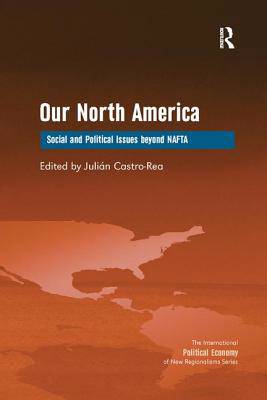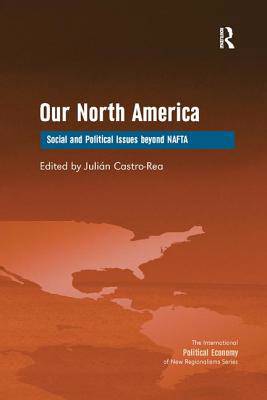
- Afhalen na 1 uur in een winkel met voorraad
- Gratis thuislevering in België vanaf € 30
- Ruim aanbod met 7 miljoen producten
- Afhalen na 1 uur in een winkel met voorraad
- Gratis thuislevering in België vanaf € 30
- Ruim aanbod met 7 miljoen producten
Zoeken
€ 75,95
+ 151 punten
Omschrijving
What we call "North America" today is a human space that has been constructed over the centuries, perceived from time immemorial by its original inhabitants as a unified whole, and named Turtle Island. What is North America today? Is it more than the sum of its parts? Does it qualify as a distinct global region? Is it just a market or also something else? This book explores several neglected aspects of the key relationships between Canada, Mexico and the United States. Studies of societal relations in North America have typically been limited to trade, investment and intergovernmental relations. In contrast, the authors in this book address other vital issues which bind this global region together, including Indigenous peoples, security, migration, civil societies, democracy, identities and culture. Via a thorough examination of these issues, the historical, sociological, economic, and political aspects of regional linkages are highlighted. Rather than dealing with each country in isolation, each chapter in this collection considers North America as a single unit of analysis, therefore systematically addressing the regional dynamic as a whole, and engaging the country-specific differences in a truly comparative way. By providing the analytical tools needed, this important book makes sense of the different aspects of the complex societies of contemporary North America.
Specificaties
Betrokkenen
- Uitgeverij:
Inhoud
- Aantal bladzijden:
- 352
- Taal:
- Engels
- Reeks:
Eigenschappen
- Productcode (EAN):
- 9781138261686
- Verschijningsdatum:
- 15/11/2016
- Uitvoering:
- Paperback
- Formaat:
- Trade paperback (VS)
- Afmetingen:
- 156 mm x 233 mm
- Gewicht:
- 511 g

Alleen bij Standaard Boekhandel
+ 151 punten op je klantenkaart van Standaard Boekhandel
Beoordelingen
We publiceren alleen reviews die voldoen aan de voorwaarden voor reviews. Bekijk onze voorwaarden voor reviews.











